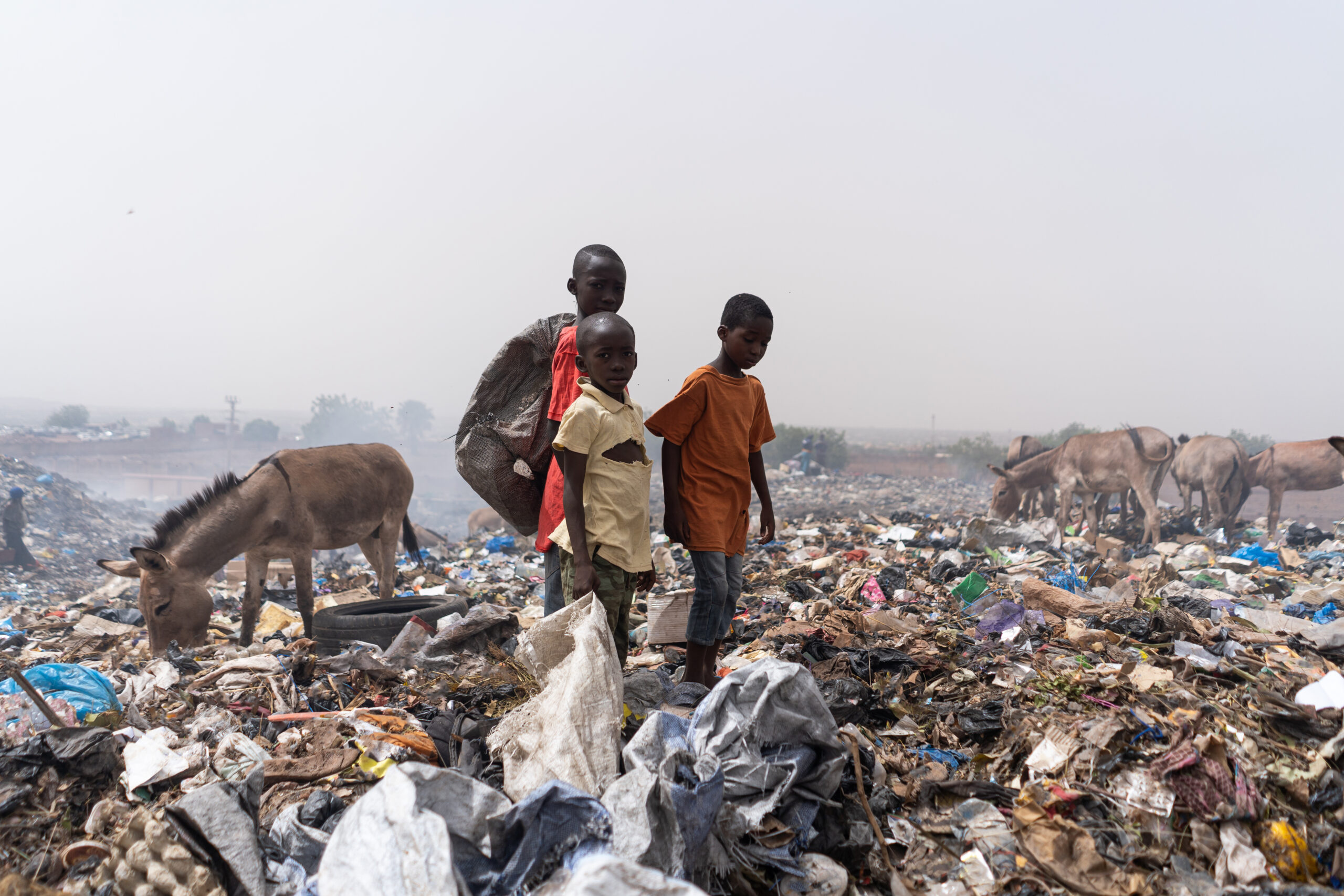
WhiteBox Grievance Mechanism for Stakeholders
Reporting for Human Rights & Sustainability in Supply Chains
About WhiteBox
What is WhiteBox?


Human Rights
Learn how to identify human rights risks & violations
Why report?
Under the German Supply Chain Due Diligence Act (LkSG) and the upcoming EU Corporate Supply Chain Due Diligence Directive, your reports play an important role in making supply-chains accountable.
Remedial
Businesses must address any already occurred violations by taking corrective actions if there are grievance (complaint) reports or signs of potential or actual breaches of responsibilities.
Preventive
Companies must prevent found risks and are expected to put in place preventive measures to avoid similar future violations or reduce the risk of such issues recurring.
Audit
Complaint procedures not only allow companies to rectify problems but also provide them with valuable feedback on how effective their risk management and due diligence efforts are. This feedback is crucial for improving and developing their risk management and due diligence strategies.
Personal Impact
Improvements to your own Working Conditions and Environment
Community Impact
improvements for the wider community and EnvironmentThe collective use of the grievance mechanism by stakeholders helps build a fairer and more ethical business environment. By consistently reporting violations, stakeholders ensure that unethical practices are brought to light and are addressed. This not only holds companies accountable but also encourages them to adopt more sustainable and ethical practices across their supply chains. Over time, this contributes to a culture of accountability and integrity in global business operations

How your reports on WhiteBox transform into positive action
Reporting human rights and sustainability issues is not just about raising a concern; it's about being a catalyst for change. Every report you make through WhiteBox contributes to creating a safer, more ethical, and more sustainable world. Your voice matters, and here's how you can use it effectively with WhiteBox.
Step 1
Report Submission
Stakeholders (including direct employees, employees of suppliers, and any other affected individuals such as neighbours to factories) can submit reports via the WhiteBox platform. Reports can be filed anonymously to protect the identity of the reporter. The submission procedure is made easy with a detailed form that guides you into submitting all important information. The platform supports multiple languages, making it accessible globally. Furthermore, it is accessible to illiterate stakeholders through the latest voice to text transcription technologies.
Step 2
Report Receival
Step 3
Investigation & Assessment
The report is assessed and the issue is investigated by trained administrators or appointed consultants. This involves verifying the provided information, communicating with the reporter, and collecting complementing information to assist further steps.
Step 4
Forwarding to Relevant Parties
Step 5
Action Formulation
Step 6
Implementation of Actions
Step 7
Monitoring and Evaluation
Step 8
Feedback and Continuous Improvement
Step 9
Closure & Positive Impact
Once the issue is resolved to the satisfaction of all parties involved, the report is officially closed. The reporter is notified of the closure, and the report is archived for future reference and compliance purposes. Thanks to your report, improvements have been made in your workplace or surroundings. WhiteBox has helped facilitate these changes.

Environment
Learn how to identify Environmental risks & violations
Why Whitebox?
Who administrates reports on WhiteBox?
Grievances
According to the German Supply Chain Due Diligence Act, Handlers of Grievance-Reports must be available in time, provide a guarantee of impartial action, be independent and not bound by instructions (no conflicts of interest), be obliged to maintain confidentiality, and be appropriately trained.
Whistleblowing
According to the EU Whistleblowing Directive, Handlers of Whistleblower-Reports must be independent. Furthermore, companies must ensure that other (operational) tasks and duties do not lead to conflicts of interest and that they have the necessary expertise.
File a Report
Here’s how you can use our platform to file a report:

Access the Reporting Portal
As a first step, you can select the language in which you will fill out the form. It’s important to note that while text input is available in all languages, audio input support is limited to specific languages. Also note that your input language can be different to the language of the form (output language). This step ensures that you can comfortably proceed with the reporting process in your preferred languages. Please select your languages and click "Next" to proceed.

Choose the Type of Form
Next, you will choose the type of form you prefer to work with. WhiteBox offers two options: a standard text-only form and an audio-enabled form. The audio-enabled form is designed to accommodate users who may have difficulty with reading and text inputs or prefer to provide information verbally while still remaining completely anonymous if desired. The audio enabled form does not only allow you to listen to the form text but also allows you to enter information by speaking. Select the option that best suits your needs and click "Next" to continue.

Choose the Type of Procedure
In this step, you will select the type of procedure you wish to follow. You can choose between filing a grievance report or a whistleblowing report. A grievance report is a complaint about already occurred violations or risks relating to human rights or the environment associated with a company's supply chain. A whistleblowing report involves disclosing information about unethical or illegal activities that could affect the company. Understanding the difference helps ensure that your report is categorized correctly and handled appropriately. Please read the descriptions carefully before making your selection and click "Next" to proceed.

Review & Agree to Policies
Before proceeding, it's important to review and agree to the procedural rules and privacy policies of WhiteBox. This step ensures that you are aware of and consent to how the procedure will progress, how your information will be used and shared. Confirm that you have read and agree to the procedural rules, consent to data sharing with relevant parties, and understand the privacy policy. Once you have marked the necessary checkboxes, click "Next" to proceed.

Provide User Details
In this step, you can provide your personal details if you choose to do so. This information can help us address your report more effectively. You are not required to provide personal information, but doing so might facilitate a quicker resolution. If you choose to provide details, please fill out the form with your email, full name, phone number, and country of residence (in addition to an always mandatory password). Once completed, click "Next" to proceed.

Enter Reported Company & Worksite Details
Stakeholders must fill in details about the company that is responsible for the risk or violation (reported company) and worksite related to the incident (incident worksite). This includes the company name, location, and website. Accurate details are essential for WhiteBox to forward the report to the correct entities and ensure effective resolution.

Specify NGO Representation

Include Direct & Indirect Customers
Stakeholders can choose to include direct and indirect customers of the reported company in the procedure. This ensures that all relevant parties in the supply chain are informed and can take necessary actions in response. You do not need to know any details of customers as WhiteBox automatically identifies these companies based on the reported company information.

Provide Incident Details
Detailed information about the incident is provided in this step, including the type of violation, a description, and any supporting files or pictures. Furthermore, you have the chance to enter a suggested remedy for this violation or risk. This is the first opportunity for you to take part in the formulation of a remedial or preventive action in response to your report. Accurate and comprehensive details help in the proper investigation and resolution of the reported issue.

Review Report & Disclaimers
Before submission, stakeholders have the opportunity to review all entered information to ensure accuracy. This step is crucial for confirming that all details are correct and that the report comprehensively covers the incident. Reviewing prevents errors and omissions that could delay the resolution process. Depending on your choices and options, you also may find additional disclaimers and policies of companies which you have included in the procedure.

Success!

Protecting workers' rights in the garment industry: A group of workers in a garment factory in Eastern Europe want to report unsafe working conditions, unpaid wages, and physical abuse from their supervisors. By using WhiteBox, an investigation can be launched, and the factory can be forced to improve its working conditions and compensate the workers.
Eastern Europe
Textiles
Southeast Asia
Food products
Holding mining companies accountable for their actions: A community in South America want to report a mining company's environmental destruction, forced displacement, and human rights abuses. Their report on WhiteBox will lead to an investigation, and the company can be forced to compensate the affected community and improve their environmental and social practices.
South America
Mining
Improving worker safety in the construction industry: A group of workers in a construction site in Western Europe use WhiteBox to report unsafe working conditions and lack of safety equipment. Their report prompted the construction company to improve its safety practices and provide its workers with the necessary equipment.
Western Europe
Construction
Promoting transparency and accountability in the mining industry in Africa: A group of civil society organizations use WhiteBox to report a mining company's opaque and exploitative business practices in a rural region of Africa. Their report prompted an investigation, and the company was forced to disclose its financial flows and improve its community engagement practices.
South Africa
Mining
Protecting workers' rights in the construction industry in the Middle East: A group of migrant workers in a construction site in the Middle East use WhiteBox to report abusive working conditions, including long working hours, low wages, and physical abuse from their supervisors. Their report will lead to an investigation, and the construction company can be forced to improve its labor practices and compensate the affected workers.
Middle East
Construction
resources for value-chain stakeholders
Information for all that want to file a report








